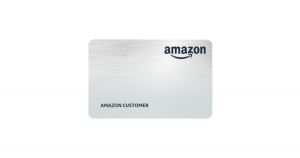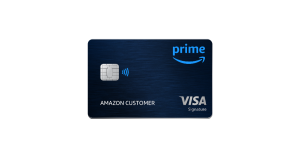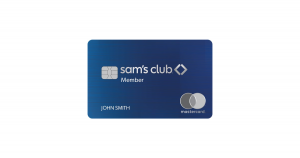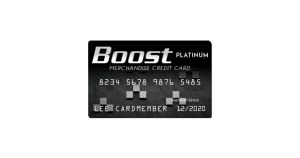A recent Experian report highlights current trends in retail credit card usage among consumers. The findings suggest that retail credit cards have a possible shrinking role in today’s economy. Here’s what you need to know.
Experian Research Shows Changes in Retail Card Balances
According to the Experian report’s findings, retail traffic has grown throughout 2022 – so much so that the total balance on store credit cards increased by $7.3 billion. The card balance jump brings the total retail debt up to $118.9 billion. As you can see, retail credit cards are not exactly slowing down in growth. However, in relation to traditional credit cards, they play a minor role in today’s economy.
What Is A Retail Credit Card?
A retail credit card is specific to a store or retailer. The difference between a retail store credit card and other credit cards is usually that you can only use them to make purchases at a particular retail store or group of stores. Reward redemption options might also be limited to only store-related credits and earning maximum rewards applies to store purchases only.
Types of Store Credit Cards
There are also usually two types of retail credit cards: a private label and a co-branded card. An example of this distinction is the Amazon Store Card (private label) vs. Amazon Visa or Prime Visa (co-branded). With co-branded credit cards, you may experience a bit more freedom and flexibility regarding card usage, rewards, and redemption options. You might also encounter more benefits found in traditional credit cards, like built-in travel protections, no foreign transaction fees, and more.
Another good example of a co-branded card is the Sam’s Club® Mastercard®. With it, you can earn 5% cash back on gas, up to 3% cash back on Sam’s Club purchases, 3% back on dining and takeout, and 1% cash back on all other purchases wherever Mastercard is accepted. Although the Sam’s Club Mastercard is a co-branded card, it still gives you the flexibility of earning rewards outside of the Sam’s Club store. Under the umbrella of retail cards, you may also encounter merchandise cards like the Unique Platinum Card or the Boost Platinum Card.
 |
 |
 |
 |
| Amazon Store Card | Prime Visa | Sam's Club® Mastercard® | BOOST Platinum Card |
| Private Label Card | Co-branded Card | Co-branded Card | Private Label Card |
| Use only for Amazon.com store purchases | Use where Visa is accepted | Use where Mastercard is accepted | Use at the Horizon Outlet online shopping portal |
Retail Credit Card Trends
According to the Experian report’s findings, retail credit card debt increased by 6.5% in 2022. The increase is also partly affected by the current inflated economy. It is important to note that supply chain shortages have also simmered down since the start of the pandemic, which means goods were once again available for purchase in stores in 2022.
Supply shortages were common among durable goods like appliances, electronic equipment, and furniture – merchandise often purchased on retail credit cards. This might explain the retail credit card balance increase from $1,046 in Q3 2021 to $1,109 in Q3 2022.
Total Retail Card Debt
| 2019 | 2020 | 2021 | 2022 | 21-22 Change |
| $125.2 B | $114.9 B | $111.6 B | $118.9 B | +6.5% |
Retail Cards V.S. Traditional Credit Cards
Although the 6.5% debt increase translates to $7.3 billion, it does not compare to traditional credit card debt growth. Outside of store cards, conventional credit card debt grew by 16% to $910 billion, from 2021 to 2022. Retail credit card debt reached $118.9 billion during the same period.
In other words, traditional credit card debt and average balances are ten times greater than retail credit card debt. For this reason, we can see the small role retail cards play compared to traditional cards. Consumers seem to be reaching for bank-issued credit cards for their purchases – and these are not the only payment options showing growth.
Other payment methods like Buy Now, Pay Later (BNPL), or mobile payments like Apple Pay and Samsung Pay, have also made advancements in the dwindling retail credit card markets. Additionally, the rise of online shopping is another factor affecting store card markets.
Retail Card Balances Don’t Favor Specific Credit Scores
Average Retail Card Balance by Generation
| 2021 | 2022 | Change | |
| 300-579 Poor | $1,264 | $1,356 | +7.3% |
| 580-669 Fair | $1,578 | $1,693 | +7.3% |
| 670-739 Good | $1,645 | $1,718 | +4.4% |
| 740-799 Very good | $839 | $894 | +6.6% |
| 800-850 Exceptional | $352 | $377 | +7.1% |
Other report trends find that retail credit card balances increased among all credit scores at similar rates in 2022. The increase in credit scores ranges from 4.4% to 7.3% – less than the inflation rate standing at 8.2% during the same period. When it comes to retail card balance trends throughout the country, the western states saw the most growth in 2022. However, the highest increase happened in an eastern state: Maine balances grew by 10.1% in 2022.
Trends happening within generations shows younger consumers reaching more for their retail credit cards than using other payment options, like BNPL. Generation X in particular peaks the average balance of their retail cards at $1,422. In contrast, the older U.S. consumer balances increased very little.
The Bottom Line
While traditional credit cards play a larger role in today’s economy, and BNPL services continue to expand in use, retail credit cards still hold their place in consumers’ wallets. Despite their popularity mostly among the younger generations, store credit cards show growth. While the growth may be on a smaller scale compared to traditional credit cards, they still provide U.S. consumers with an additional option for making purchases at their convenience.
Related Article: The Best Debit & Prepaid Cards
Featured Image by SimoneN / Getty Images
Editorial Disclosure – The opinions expressed on BestCards.com's reviews, articles, and all other content on or relating to the website are solely those of the content’s author(s). These opinions do not reflect those of any card issuer or financial institution, and editorial content on our site has not been reviewed or approved by these entities unless noted otherwise. Further, BestCards.com lists credit card offers that are frequently updated with information believed to be accurate to the best of our team's knowledge. However, please review the information provided directly by the credit card issuer or related financial institution for full details.



